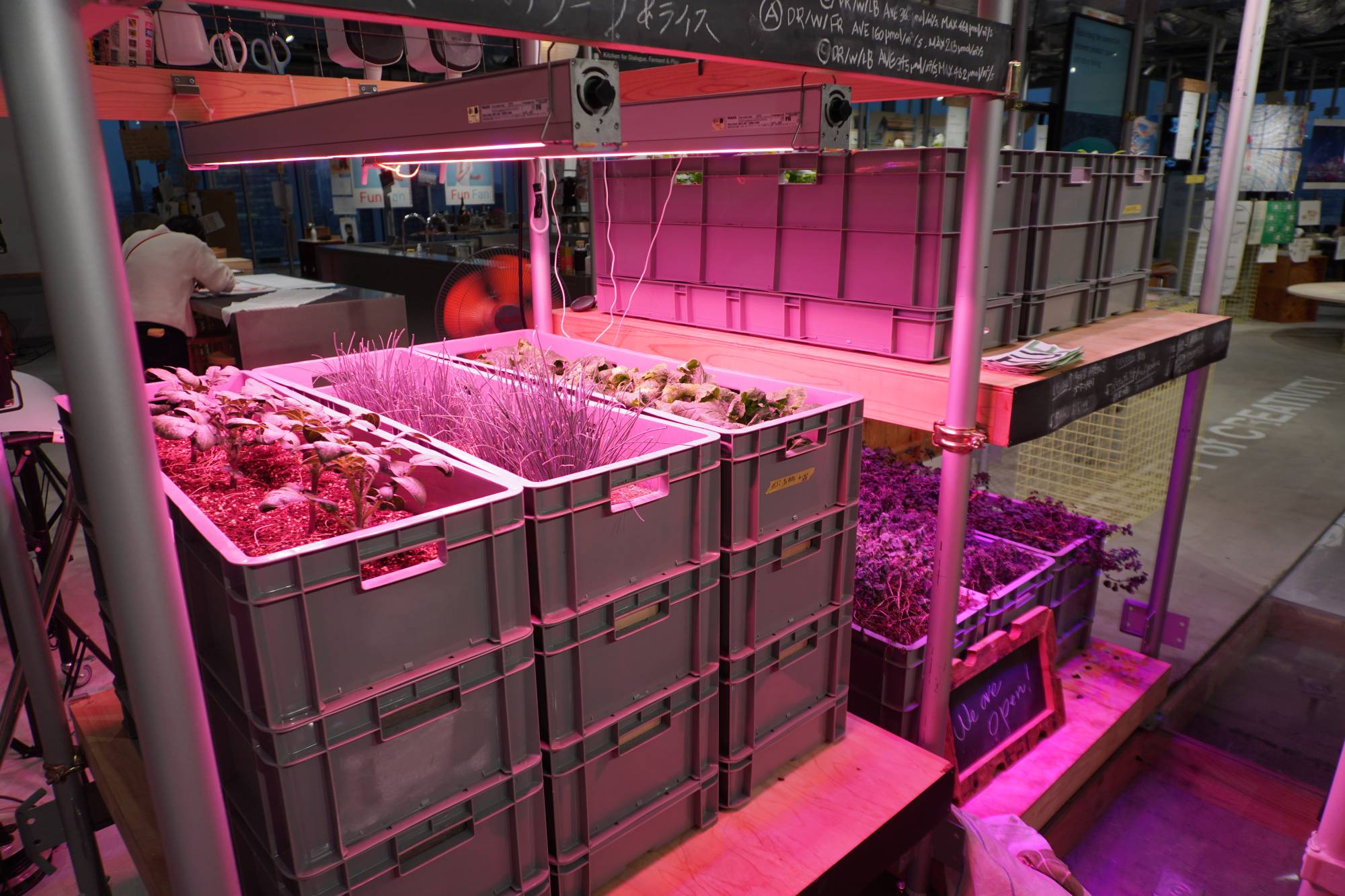
Can urban farming play a key role in food security?
Urban Farming Japan | Francesco Bassetti |
Vertical approach
The role of technology in urban farming is also moving the industry away from traditional soil-based methods of food production and opening the door to urban farming on a commercial scale through indoor vertical farming.
The practice, which involves growing plants in stacked layers and closed environments using artificial lighting and no soil, has seen a staggering growth, with recent research indicating that the vertical farming market reached $8.5 billion globally in 2022. The sector is forecast to grow to be worth about $20 billion by 2026.
In 2022, 20 of the foremost players in the vertical farming space came together to sign an industry manifesto that seeks to “transform food systems for the benefit of people and the planet, and contribute a solution to the deepening environmental crisis exacerbated by traditional agriculture.”
IMAGE: Lettuce grown using PlantX’s vertical cultivation machine | FRANCESCO BASSETTI
A case in point, Masahito Takeyama, general manager at PlantX, explains that this type of urban farming contributes to a sustainable society by reducing the carbon footprint associated with transportation, and drastically reducing the use of finite resources, such as water and nutrients, compared to conventional agriculture.
“Our production facility in Tokyo sells products directly to a neighboring supermarket, and we developed another commercial plant near Tokyo last year, which sells products in more than 200 supermarkets,” Takeyama says.
Although most vertical farming currently focuses on producing a limited number of herbs, leafy greens and salad vegetables due to profitability margins and difficulties growing other crops in controlled environments, Berlin-based startup InFarm recently managed to grow wheat in an indoor farm without using soil.
The potential for growing calorie crops — such as maize, rice and wheat which together provide just over 50% of the world’s plant derived food energy — in vertical farms has huge implications for our ability to feed the planet’s growing population.
“As the global population continues to rise and climate and political instability persist, we need to find ways to create more resilient food systems,” says Edeltraud Guenther, a professor at the United Nations University Institute for Integrated Management of Material Fluxes and Resources in Dresden, Germany.
Guenther’s institute has been studying the role of high-tech innovation in farming for more than a decade, and she sees huge potential for vertical farming to provide a sustainable solution to food security, particularly in places that are water-scarce and energy-rich or places that do not have much available farmland.
“Food security is about both producing sufficient food but also food that isn’t polluted,” Guenther says. “With vertical farming, you’re growing food in a controlled environment, which means that you’re not exposed to external stresses such as droughts or floods and you know exactly what is in the end product.”
I
MAGE: Plants grow indoors at the University of Creativity campus in Tokyo’s Akasaka neighborhood. | FRANCESCO BASSETTI
However, intensive indoor agriculture has thus far suffered from significant growing pains.
“One of the most important challenges is the utilization of electricity in a more sustainable way,” says Takeyama, who is working with PlantX to optimize the use of electricity by, for example, increasing production efficiency.
Yet some companies have not been able to cope with spiraling energy costs, particularly since Russia’s invasion of Ukraine. InFarm, one of the largest in the sector, announced in November that it would be laying off around 500 people and ceasing operations in the United Kingdom, France, the Netherlands and Japan due to “escalating energy prices, supply chain disruptions and rising material costs.”
Guenther, however, remains hopeful.
“With emerging technologies and innovation, initial costs are often high, but 30 years from now vertical farming will be more competitive,” she says.
Guenther believes that governments around the world should create a political and regulatory environment that will facilitate faster innovation in the sector.
To some, however, whether vertical farming can overcome its growing pains is besides the point.
“Producing food in urban areas doesn’t automatically translate to a connection with nature and a holistic approach to land management, which is the central point of urban farming in the first place,” Sawyer says.
IMAGE: Aomame House also features a pizza oven where residents can cook some of the ingredients grown in the garden. | COURTESY OF THE UNIVERSITY OF CREATIVITY
Read the Entire Original Article Here: https://www.japantimes.co.jp/life/2023/03/06/environment/japan-urban-farming/






